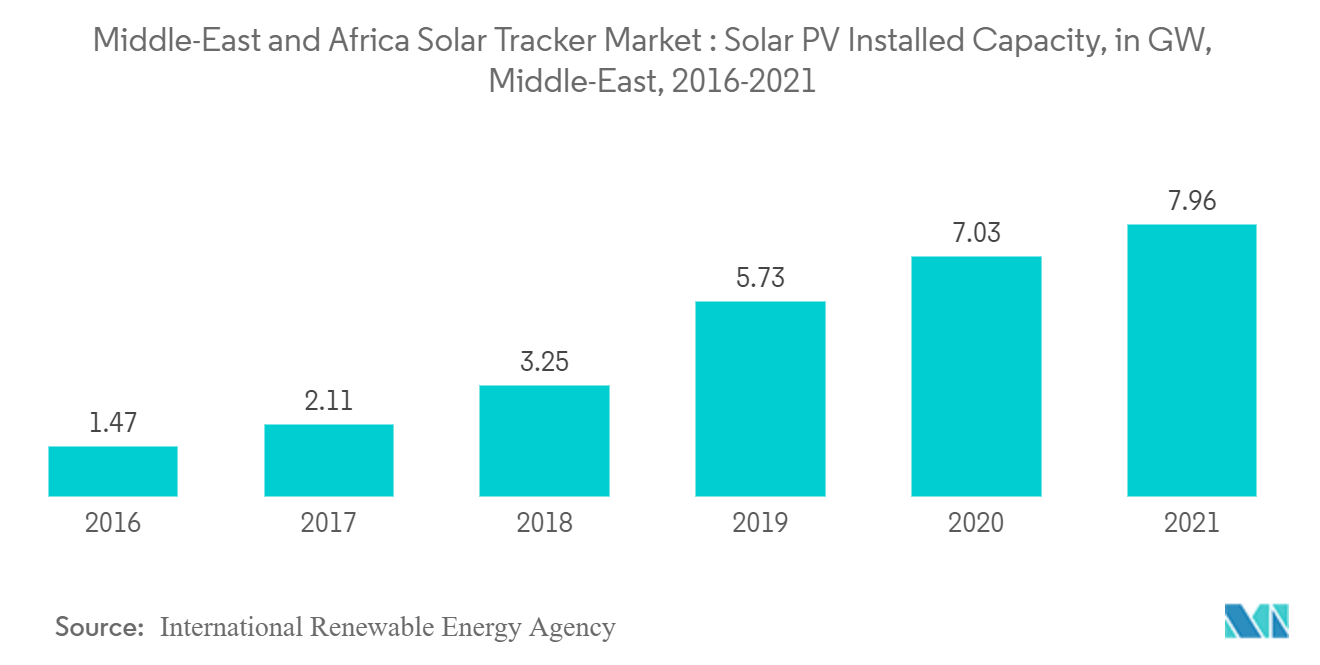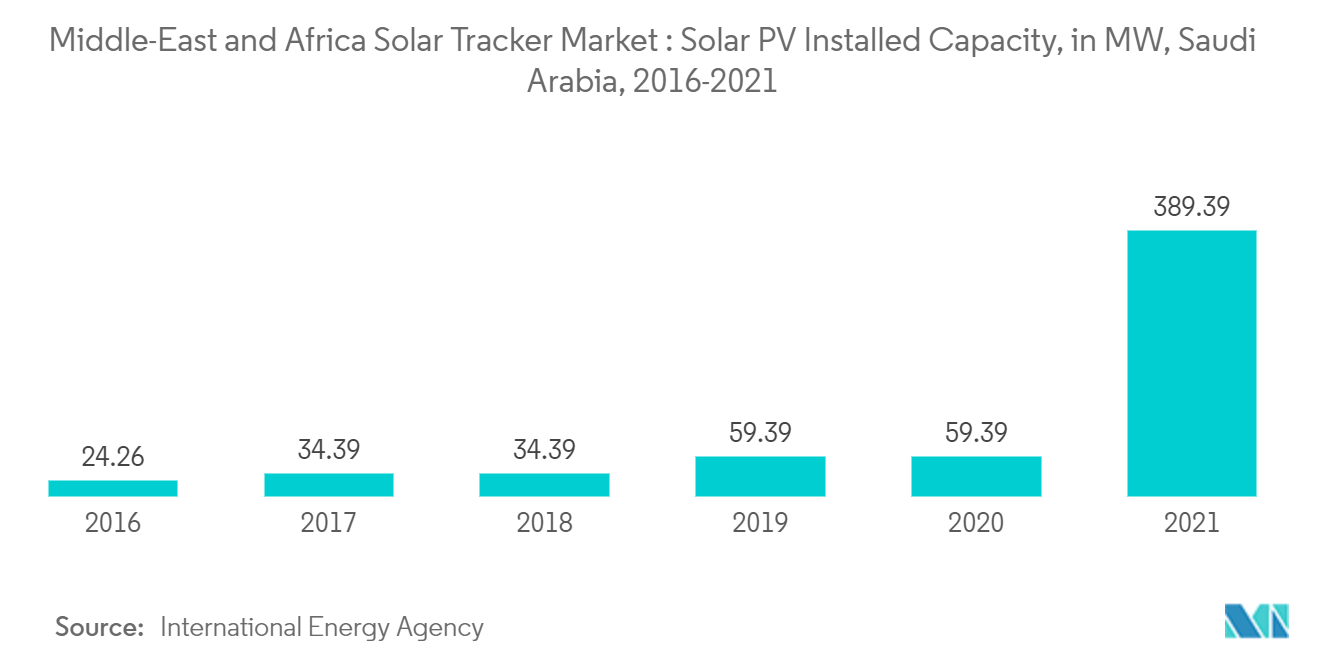Market Trends of Middle East and Africa Solar Tracker Industry
Single-Axis Trackers Expected to Witness Significant Growth
- Single-axis trackers are devices in which only one angle is used as the axis of rotation. These trackers can increase the power production capacity by 30%. They provide simple, efficient, and low-cost options to improve the functioning of solar energy systems.
- The solar energy progress is reaching a zenith in the Middle East and African (MENA) region due to the dropping solar PV prices and success in CSP power generation. The solar PV capacity in the Middle East was around 7.96 GW in 2021 after crossing consistent growth. The proliferation of utility-scale projects was also one of the reasons behind the growth. Countries like the UAE, Saudi Arabia, and South Africa were beaming in that portfolio.
- For example, in May 2022, Emirates Water and Electricity Company (EWEC) called for applications for a utility-scale solar project in the Al-Ajban area of Abu Dhabi, with a power-generating capacity of 1,500 MW. Utility-scale projects highly demand single-axis trackers in the region due to the low cost and simple installation.
- Additionally, in May 2022, a solar power plant in South Africa got commissioned by Gold Miner, which features single-axis solar trackers supplied by STI Norland, which is owned by the Array Technologies company. The 10 MW power plant is the first solar PV facility of this capacity to be commissioned by the gold mining company.
- Such developments are expected to steer the single-axis solar trackers market in the MENA region in the near future.

Saudi Arabia Expected to Witness Significant Growth
- The Saudi Arabia solar PV market has grown substantially in the last decade, primarily due to two factors, the falling solar PV costs and the favorable government policies for an augmented growth of the renewable energy sector.
- The country has witnessed a huge number of solar PV installations on a utility-scale and in the commercial segment. In May 2022, the solar PV installed capacity was around 3 GW in the country, which is enough to power 600,000 homes. The Saudi government has pledged to generate 50% of its electricity from renewable sources, with solar energy playing the central role. As of 2021, the solar energy generation in the country was around 0.8 TWh, which still needs to improve a lot.
- The growing solar PV projects have led to the demand for solar trackers in the country. For example, in 2022, PV Hardware, the leading global solar tracker manufacturing company, opened a new solar tracker factory in Jeddah, Saudi Arabia. The production facility is expected to produce around 8 GW of solar trackers per year for solar plants.
- Furthermore, in 2022, the same company clinched a contract for the supply of 387 MWp of its Monoline 2V bifacial solar trackers for the Jeddah Noor PV solar project located in the Makkah province of Saudi Arabia.
- Owing to such developments, the country is expected to grow at a faster rate in the solar tracker market during the forecast period.



